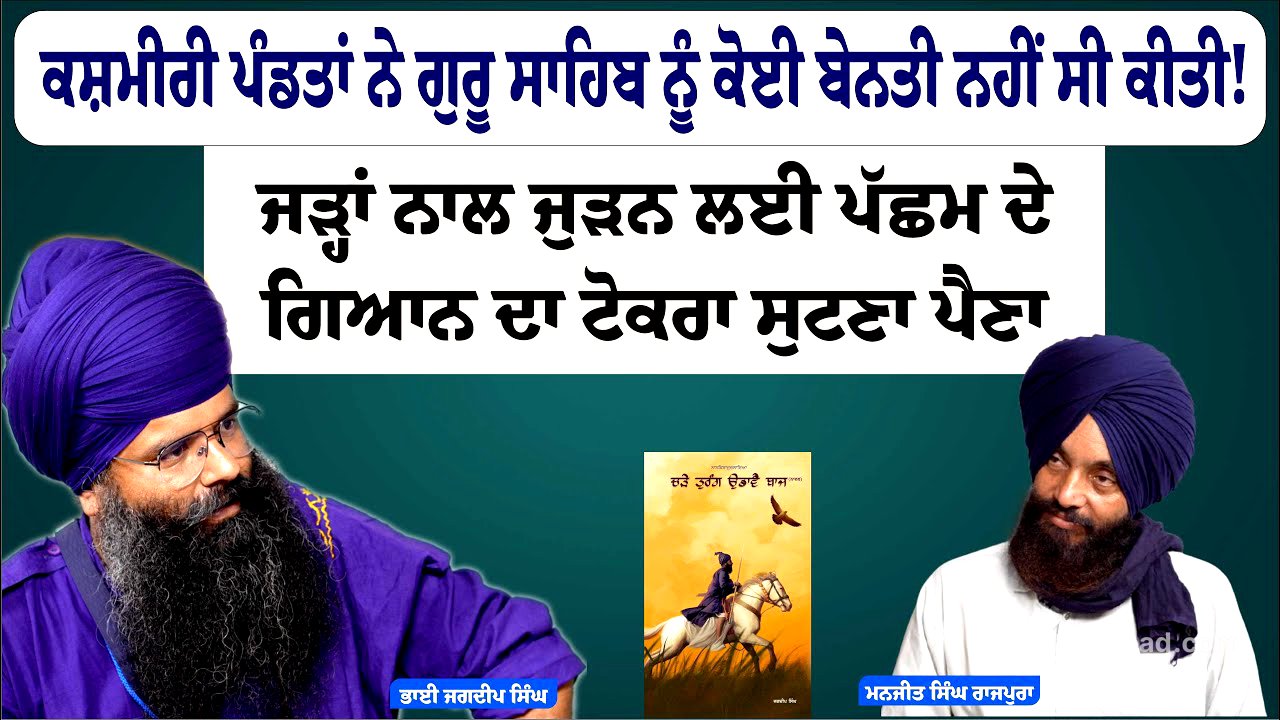TLDR;
This video discusses the importance of preserving Sikh history and traditions, addressing concerns about the distortion of historical narratives and the impact of modern education and technology on Sikh youth. It emphasizes the need to understand and promote Sikh culture through its own stories and teachings, rather than relying on external influences.
- Importance of preserving Sikh history and traditions.
- Concerns about distortion of historical narratives.
- Impact of modern education and technology on Sikh youth.
- Need to promote Sikh culture through its own stories and teachings.
Introduction [0:00]
The speaker begins by highlighting the significance of Sikh thinkers and traditions, asserting their superiority over Western thought. He references Bhai Nand Lal Ji and emphasizes the profound wisdom found within Sikh teachings. The speaker then transitions to discussing contemporary issues affecting the Sikh community, including the distortion of historical events and the challenges of preserving Sikh identity in the face of modern influences.
Distortion of Sikh History [0:34]
The speaker addresses the issue of historical revisionism, particularly concerning the martyrdom of Guru Tegh Bahadur Sahib. He recounts instances where the role of Kashmiri Pandits in this event is omitted or denied by prominent media channels. The speaker expresses concern that such distortions can mislead Sikh youth and undermine their understanding of their own history. He also mentions the Delhi Kisan Morcha, where a professor dismissed the sacrifices made to protect the Sikh religion as mere legends.
The Tradition of Sakhis [1:51]
The speaker discusses the Sakhi tradition, emphasizing its importance in Sikh history and storytelling. He mentions two notable books on Sakhis and explains how these stories have been passed down through generations. The speaker also cautions against the fabrication of incidents and the manipulation of narratives for personal or political gain.
Personal Anecdotes and Teachings [2:21]
The speaker shares personal anecdotes and teachings related to Sikh history and values. He recounts a story about Bhai Mardana and Guru Nanak, illustrating the importance of faith and perception. He also narrates an incident from his childhood, where his mother taught him the difference between the Guru and the Masands (corrupt religious leaders), reinforcing the importance of upholding the Guru's teachings.
The Story of Bhai Jaita Ji [2:34]
The speaker narrates the story of Bhai Jaita Ji, who carried Guru Tegh Bahadur Sahib's head to Anandpur Sahib after his martyrdom. He emphasizes the courage and devotion of Bhai Jaita Ji and the sacrifices made by other Sikhs, such as Bhai Lakhi Shah Vanjara, who cremated the Guru's body by setting his own house on fire. The speaker highlights the significance of Rakabganj Sahib, the site of Bhai Lakhi Shah's house, as a central place for the Sikh community in Delhi.
The Importance of Traditional Education [11:11]
The speaker expresses concern about the declining standards of education among Sikh children and their lack of understanding of Sikh history and traditions. He advocates for a return to traditional methods of learning, such as poetry and storytelling, which were used by earlier generations to impart knowledge and values. The speaker also emphasizes the importance of reading ancient Sikh scriptures and birth records to gain a deeper understanding of Sikh history.
The Impact of Modern Technology [18:23]
The speaker discusses the negative impact of modern technology, particularly mobile phones and social media, on Sikh youth. He shares examples of children who are raised without mobile phones and are deeply connected to their Sikh heritage. The speaker also mentions the Amish community, who avoid modern technology and prioritize traditional values and education.
Preserving Punjabi Language and Culture [34:56]
The speaker addresses the issue of Punjabi language and culture, expressing concern about the increasing use of English and the ridicule faced by those who speak Punjabi incorrectly. He emphasizes the importance of preserving the Punjabi language and promoting its use in all aspects of life. The speaker also suggests establishing alternative schooling systems where students can learn Punjabi and Sikh traditions without being influenced by external cultures.
The Power of Faith and Devotion [45:11]
The speaker concludes by emphasizing the power of faith and devotion in Sikhism. He recounts stories of Sikh martyrs and emphasizes the importance of remembering their sacrifices. The speaker also highlights the limitations of intellect and the importance of surrendering to the will of God. He shares a personal experience of witnessing a young girl who is deeply committed to restoring the Sikh empire, illustrating the enduring power of Sikh values and traditions.
Conclusion [49:01]
The speaker reiterates the need to protect Sikh youth from harmful influences and to promote Sikh culture through its own stories and teachings. He emphasizes the importance of preserving Sikh history and traditions for future generations and encourages the community to take proactive steps to ensure the survival of Sikh identity.









